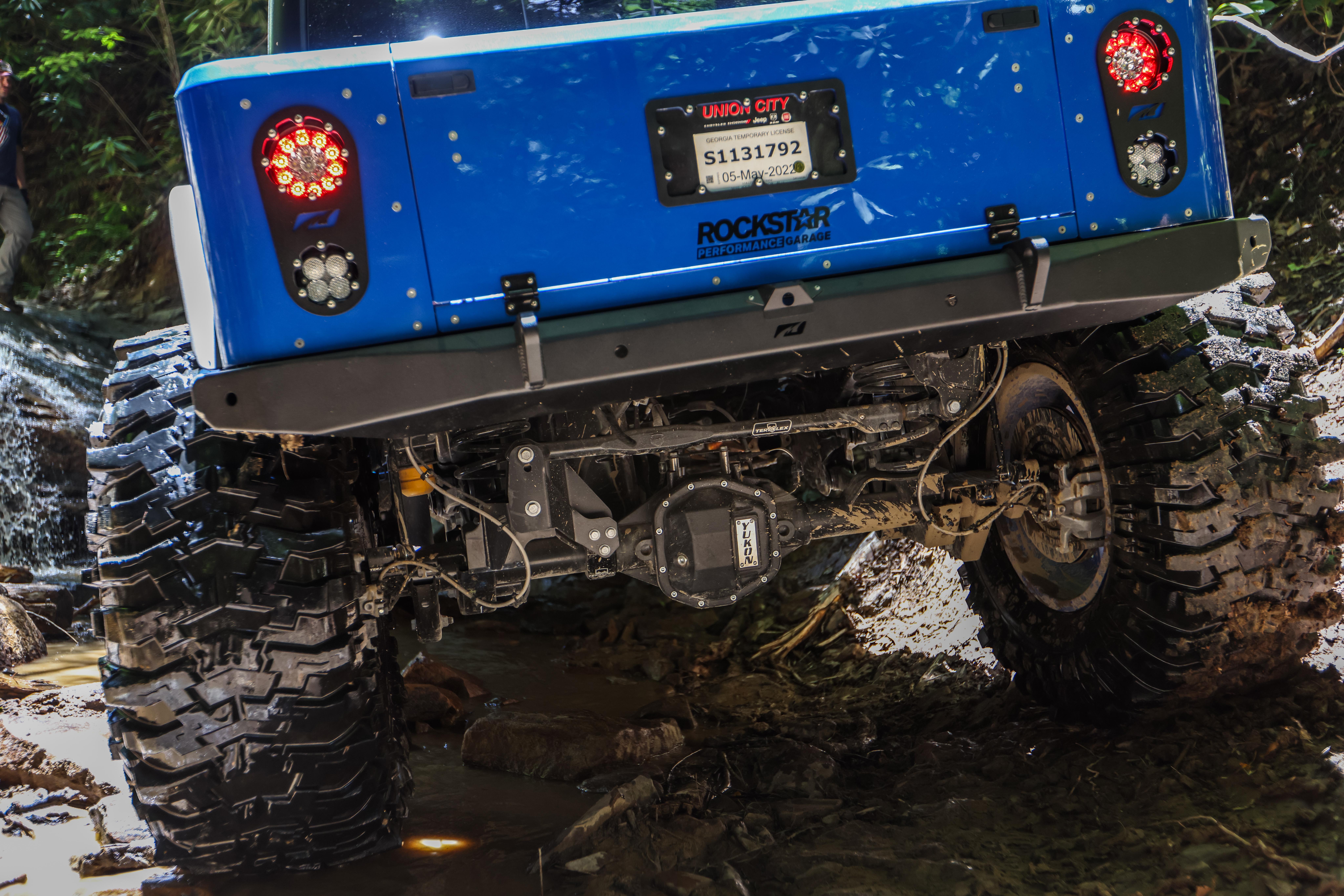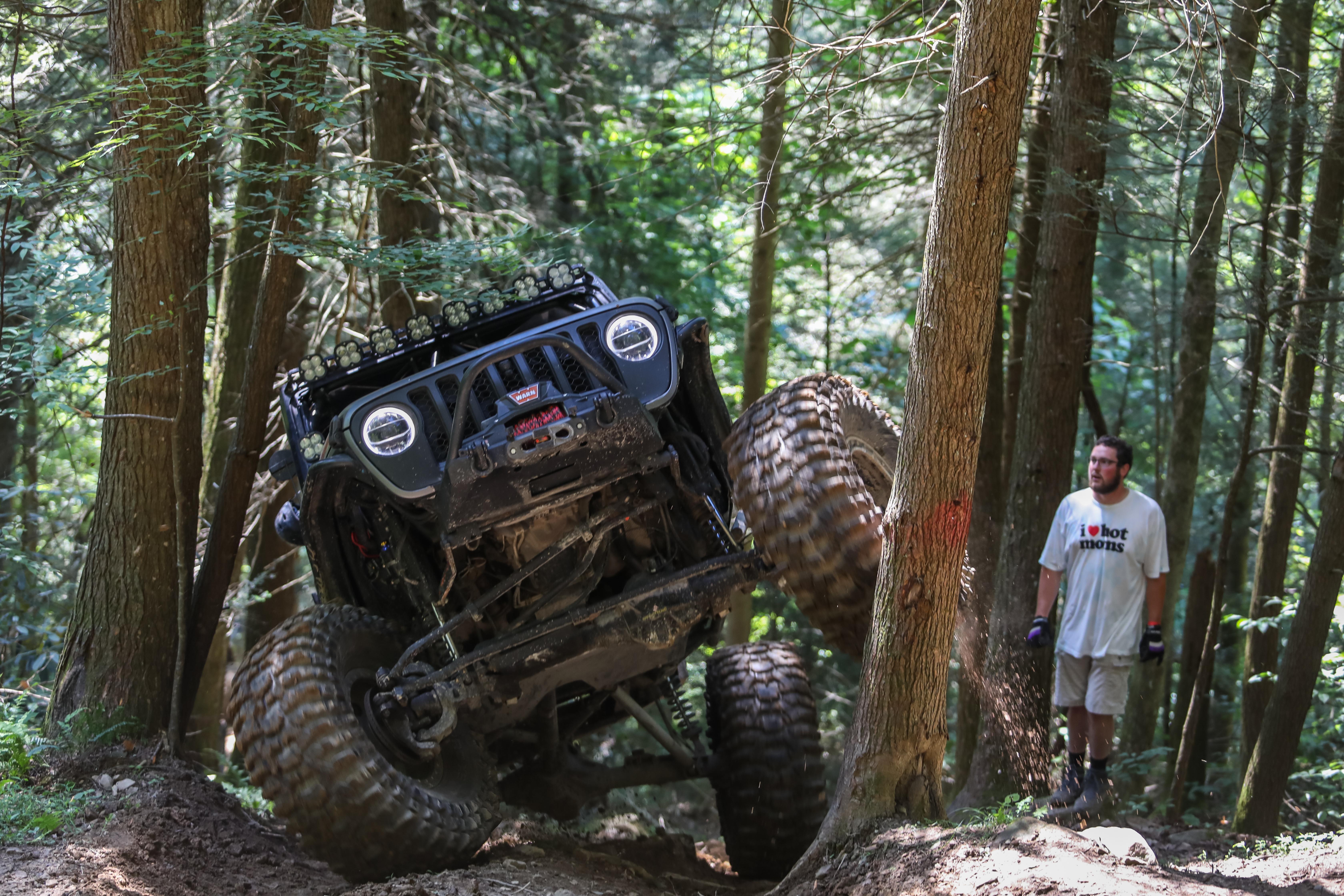Goal of this guide: explain how lift kits, suspension design, ground clearance, and driveline geometry affect Jeep performance both on and off the trail — and help customers choose upgrades that balance capability, comfort, and reliability.
Suspension upgrades aren’t just about fitting bigger tires or making a Jeep look aggressive. Suspension controls articulation, traction, ground clearance, and even steering stability. A poorly designed lift can make a Jeep drive worse than stock, while a properly engineered system transforms how it performs on and off-road.
There are two main categories of lift systems for Jeeps:
Leveling Kits & Spacer Lifts: Affordable entry-level lifts that raise the front or add a small overall height increase. Great for fitting slightly larger tires (33s or 35s) and improving stance, but they don’t add articulation or change suspension geometry. Spacer lifts are fine for budget builds, but avoid stacking them or pushing beyond ~2 inches. Doing so stresses suspension components and throws off geometry.
Full Suspension Lifts: Replace springs, shocks, and control arms to increase wheel travel, articulation, and clearance. Available in short arm, mid-arm, and long arm versions.
Short Arm Kits: Use the factory mounting points. Easier to install and less expensive, but ride quality and articulation become limited above ~3.5” of lift. Best suited for moderate builds and weekend wheeling.
Mid Arm Kits: A hybrid solution that uses slightly longer arms and revised geometry. They provide better ride quality and axle control than short arms without the fabrication demands of a true long arm system.
Long Arm Kits: Relocate mounting points further back, using longer arms for improved suspension geometry. These provide smoother ride quality, better axle control, and greater articulation. They require fabrication or welding, and cost more, but shine on 4”+ lifts and hardcore crawling rigs. Some custom systems — such as Motobilt’s long arm kit — require replacing the factory fuel tank with a fuel cell for clearance.
ARW recommends proven suspension systems from trusted brands like Motobilt, Rock Krawler, and Teraflex — whether you’re running short arm, mid-arm, or long arm builds. Each is engineered for strength, articulation, and durability in extreme terrain.
Lift height and tire size aren’t the only factors in off-road capability — clearance angles are just as important.
Approach Angle: The steepest obstacle your Jeep can climb without the front bumper or tires contacting first. Larger tires and high-clearance aftermarket bumpers improve approach dramatically.
Departure Angle: The steepest drop you can descend without the rear bumper, hitch, or spare tire dragging. Cutting down bumper overhangs or relocating your spare helps here.
Breakover Angle: How steep of a crest you can cross without getting high-centered on the belly of the Jeep. This angle depends on both lift height and wheelbase. Short-wheelbase Jeeps like a TJ or 2-door JL have a natural advantage over longer wheelbase rigs like the JKU or Gladiator.
Real-World Example: A stock 4-door Wrangler may drag its belly on a rock ledge where a lifted 2-door clears easily. Adding skid plates (“tummy tuck” kits) reduces damage when contact does happen.
Upgrades That Help:
High-clearance front and rear bumpers.
Suspension lifts with properly matched shocks, bump stops, and limit straps.
Belly skids and crossmember “tucks” to improve breakover.
High-line fenders to fit larger tires without extreme lift height.
Larger diameter tires to increase overall clearance.
At ARW Offroad, we install high-clearance bumpers, suspension systems, and skid plates that maximize these critical angles.
Lifting a Jeep changes the angle of the driveshafts. Too much angle can cause vibrations, premature U-joint wear, or even binding.
Double Cardan (CV) Driveshafts: Used to correct steep angles in taller lifts. A must-have for Jeeps with 4”+ of lift, especially Wranglers with short rear shafts.
Pinion Angles & Control Arms: Adjustable control arms become essential at higher lift heights. They allow you to properly set pinion angle, center the axles, and correct caster for safe highway manners. Without them, driveline vibration and poor alignment are guaranteed.
Pro Tip: Whenever lifting more than 3”, budget for new driveshafts and adjustable control arms. ARW often installs Adams Driveshaft CV shafts along with heavy-duty adjustable arms to keep rigs smooth, safe, and properly aligned. Short-wheelbase rigs (JL 2-door) are most prone to driveline vibes when lifted, while Gladiators handle taller lifts more easily thanks to their longer shafts.
Suspension and clearance components take heavy abuse. Before hitting the trail:
Torque check control arms and track bars.
Inspect bushings and rod ends for play.
Look for leaks on shocks.
Confirm bump stops and limit straps (if equipped) are in place to prevent over-travel.
Don’t “stack” spacer lifts — it stresses parts and ruins geometry.
Match shock length to actual suspension travel, not just lift height. Choose shocks with proper valving for your Jeep’s weight and driving style.
Don’t forget extended brake lines on taller lifts.
Long arms increase performance, but they also hang lower — consider skid plates to protect mounting points.
Gearing and suspension go hand-in-hand: if you’re running 37s or bigger, re-gear for torque and drivability.
Suspension is only as strong as its weakest link. Use quality joints, arms, and track bars from proven brands.
Suspension upgrades unlock capability, but only when done right. From simple leveling kits to full long-arm conversions with corrected driveline geometry, every part of the system works together. At ARW Offroad, we install and service Motobilt, Rock Krawler, and Teraflex suspension kits, Adams Driveshaft CV systems, and premium adjustable control arms to keep your Jeep smooth on the road and unstoppable on the trail.
The information in Offroad 101 is provided as a general guide for educational purposes. Off-road driving involves inherent risks to vehicles, passengers, and the environment. Even if your Jeep is mechanically capable of handling a trail, your personal experience and driving skill play a critical role in safety and success.
ARW Offroad is not responsible for vehicle damage, injury, or other consequences resulting from the use of this information. We encourage drivers to know their limits, wheel responsibly, and seek hands-on training when tackling advanced terrain.



